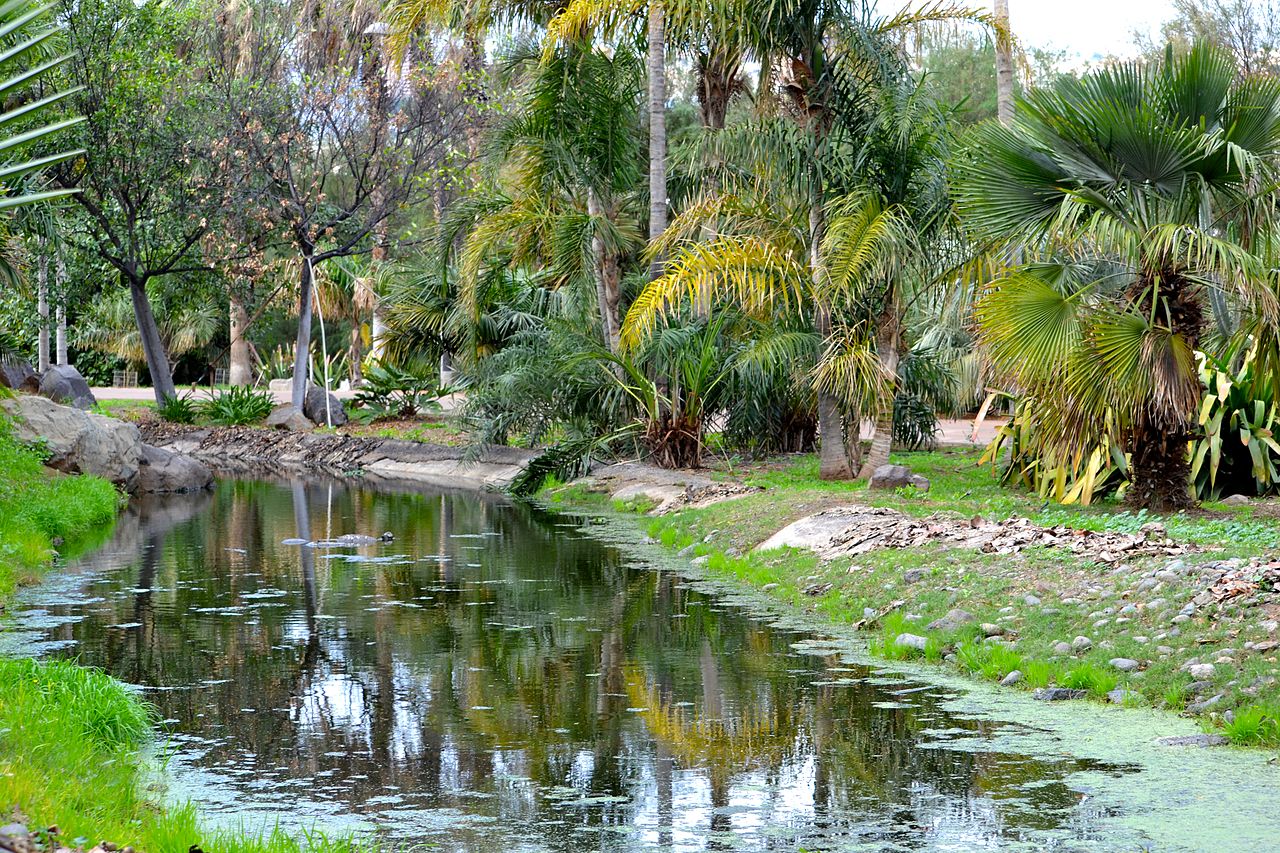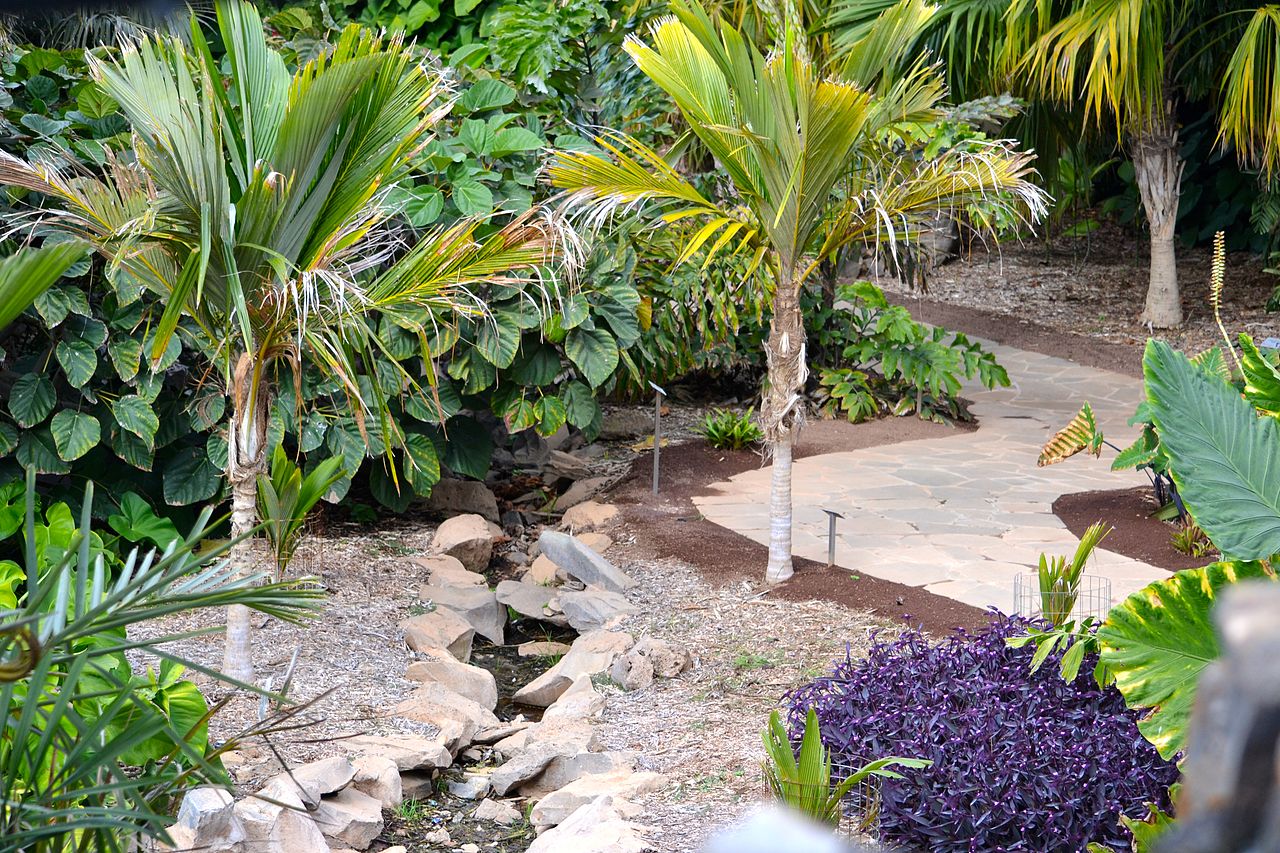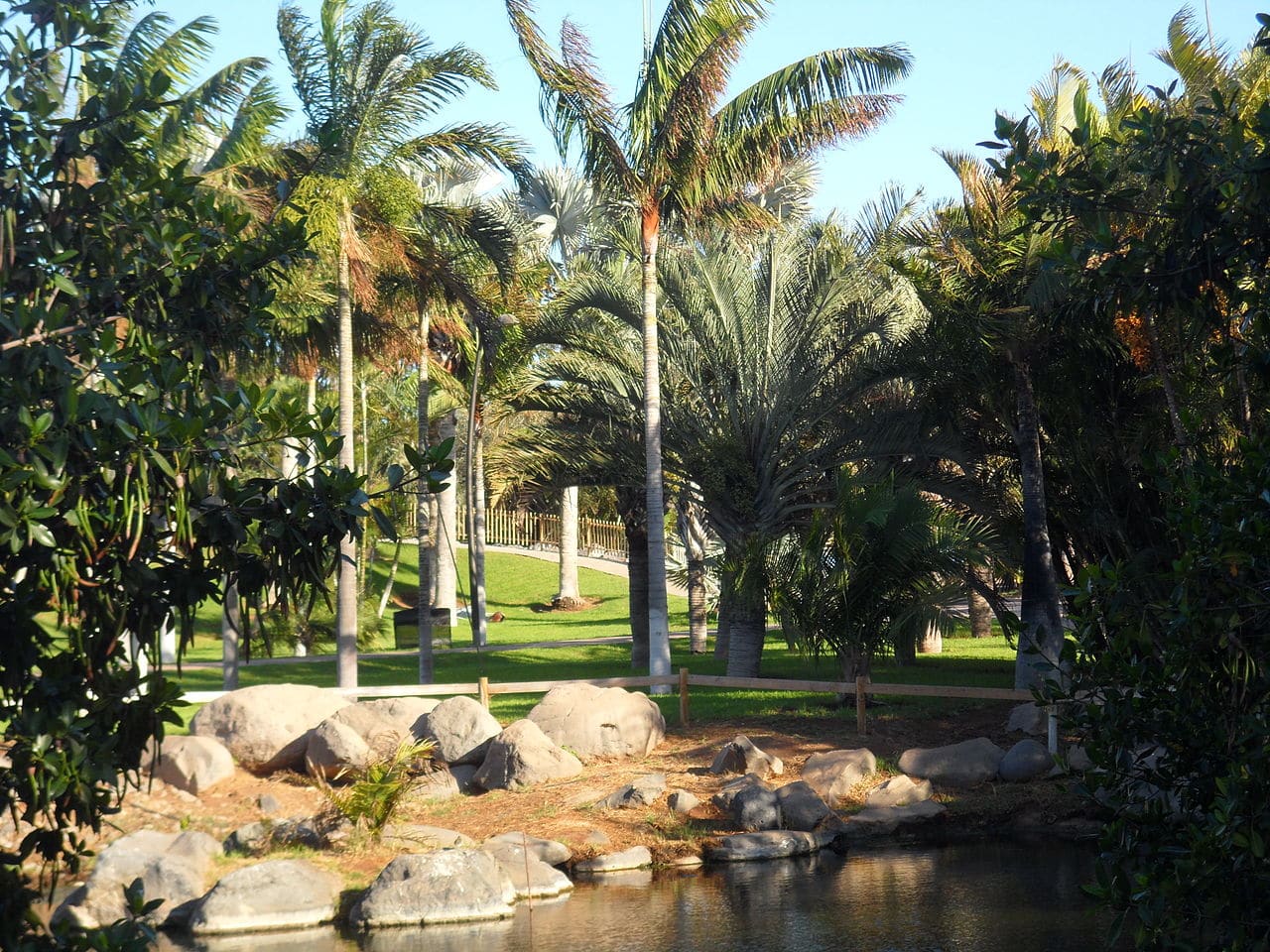
Image - Wikimedia / elduendesuarez
Visiting a palmetum is entering a place where you will enjoy seeing, above all, palm trees, but also others that accompany them that have an unparalleled beauty. They are very special gardens, which seem to be taken from a story, and which will undoubtedly make you lose track of time.
Around the world there are several, and fortunately, in Spain we are fortunate to be able to visit one of the most important: the Palmetum of Tenerife, located as its name suggests on the Canary Island of Tenerife.
History of the Palmetum of Tenerife

Image - Wikimedia / elduendesuarez
The history of this magnificent place started in 1995, twelve years after the landfill was closed. Thanks to the help of funds received by the European Union, the engineers Juan Alfredo Amigó and José Luis Olcina, led by the agronomist Manuel Caballero Ruano and the botanist Carlo Morici, began to reconvert that area into what would end up being the home of thousands of plants, many of them critically endangered.
A year later, in 1996, various waterfalls were built and the first specimens were planted, but in 2000 the project had to be paralyzed due to lack of funds. However, the maintenance did not cease. In 2007 and 2008 the irrigation systems were replaced, and the slopes facing south were landscaped. Also, the collections were reorganized, and some geographic sections were created.
Later, In 2010, the building that would serve as the entrance was built, and the roads and squares were paved. And now, finally, in 2013 the first guided tours were offered, although the park was still closed.
Its inauguration was on January 28, 2014, and it occurred with the presence of the current kings Don Felipe de Borbón and Doña Letizia. Just one year later, the Palmetum de Tenerife became an official botanical garden, and began to receive both locals and tourists.
General characteristics

Image - Wikimedia / elduendesuarez
The Palmetum of Tenerife is a botanical garden with an area of 120.000 square meters located in the Cabo Llanos neighborhood. One of the things that stands out the most are its "biogeographic sections", in which plants from certain countries are present. For example, in the section for Borneo-Philippines, we will find specimens from those places. All this is possible thanks to a very mild climate, with an average annual temperature of about 21,7ºC and a minimum temperature of 13ºC.
In addition, 573 species of palm trees are represented, being the most important collection in Europe. Although, of course and as we said at the beginning, we can also see other families of plants: trees, shrubs, succulents.
But, apart from seeing plants, another of the things that the Palmetum offers are educational programs for schools, being a perfect excuse for the little ones to learn the value of nature.
What is it equipped with?
Like any botanical garden worth its salt, there are a series of facilities that ensure that the organization and maintenance is always correct. They are as follows:
- Entrance building: there is the reception, a small shop and an exhibition room of objects made with palm trees, such as brooms, sculptures or hats.
- Octagon: it is a semi-subterranean shade house with an area of 2300 square meters. It was designed to house the most delicate plants, which must be protected from the wind and in a humid environment.
- Palm Museum: It is an underground structure, with an entrance that has a jungle appearance, which will house exhibitions, herbarium, warehouses, a library and a conference room.
Biogeographic sections

Image - Flickr / scott.zona
The nearly 600 species of palm trees are ordered by sections according to their place of origin. Each of these sections have an area of between 1000 and 20000 square meters, and some contain waterfalls, lakes, hills or streams. They are as follows:
- Antilles: it is the largest section, with a great variety of palm tree species, such as the saw palmettoBaileyan Copernicia: Pseudophoenix sargentii.
- South America: in this section we will see Ceroxylon alpinum, Allagoptera caudescens, o Syagrus sancona, among others.
- New Caledonia: is a section where you can find palm trees like the Chambeyronia macrocarpa, Kentiopsis oliviformis or trees of the genus Araucaria, among others.
- Hawaii: here are represented several species such as the Prichardia minor or trees like the koa acacia.
- Australia: with copies of Wodyetia bifurcata, Archontophoenix, or Carpentaria.
- Indochina: here we will see some Livistona rotundifolia, Adonidia merrillii, o areca triandra, Among others.
- Mascarene Islands: with specimens of Latania, Dictyosperma and Hyophorbe.
- Africa: With raphia australis, Hyphaene or Jubaeopsis caffra, among others.
- Madagascar: It includes Bismarckia nobilis, Dypsis cabadae, Ravenea rivularis, and even a Malagasy baobab whose scientific name is Adansonia madagascariensis.
- Central America: with species such as Mayan gaussia, Mexican Sabal o sabal mauritiiformis, among others.
- New Guinea: It was created in 2007. It has copies of Cocos nucifera, Ptychosperma, Salacca, Areca and various trees that will provide shade.
- Borneo and the Philippines: its plantation began in 2007, and has specimens of harangue pinnata, Cocos nucifera and many trees.
- Canary Islands Thermophilic Forest: It is a large valley that is on the north face of the hill, with native plant species such as, and some native species such as Phoenix canariensis or the dracaena draco, of the Canary archipelago.
Hours and prices
If you want to visit the Palmetum de Tenerife, you should know that they open every day from 10 a.m. to 18 p.m., the last admission being at 17 p.m. Prices, according to your official website, They are:
- Non-resident adult: 6 €
- Non-resident child: 2,80 €
- Resident adult: 3 €
- Residents over 65 years of age: 1,50 €
- Residents under 12 years old: 1,50 €
- Bonus residents: € 1,50 (disabled, job seekers, large family)
- Children under 2 years: Do not use. Children XNUMX yeras to XNUMX years: XNUMX packet every XNUMX hours.: free
Guided tours last 1 hour and cost € 47 if the group is less than 30 visitors. These must be requested and confirmed less than 6 days in advance.

Image - Wikimedia / Noemi MM
So, if you love exotic plants and / or need ideas to design your tropical garden, don't hesitate to visit the Palmetum de Tenerife. You will surely enjoy yourself as a child. Of course, we recommend that you go a day off in the morning or early in the afternoon, as it is easy for the visit to take longer than planned 😉.
SIMPLY HELP THE CONSERVATION OF NATURE, CONGRATULATIONS
Without a doubt, botanical gardens are for that 🙂